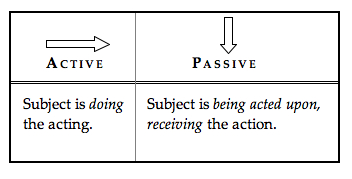One of the most important considerations in studying the foundational elements of Latin must be given to the verb, that part of speech which affirms either action or state of being. The component elements of a verb are collectively referred to as its “parsing” (from the Latin noun pars, partis = part, piece, function). These components are:
1. Tense
2. Voice
3. Mode (or Mood)
4. Person
5. Number
Or, as my beginning Greek professor used to wisely proclaim (to our era of declining quality television programming viewers) via the acronym of the first letters of each of the above words: “TV Makes People Nauseas!”
The “parsing” of a Latin “model” 1st conjugation verb laudo (“I praise…am praising…do praise”) is: Present, Active, Indicative, 1st Person, Singular. Now, let’s take a closer look at what these “parsing” components represent—
1. Tense conveys “kind” of action and generally, in the Indicative Mode only, the “time” of the action. So, for the above verb, Present tense would mean both present time and continuous “action” (that is, activity in real, present time). Of course, from your additional study elsewhere, you’ll know that the Latin tenses are the Present, Imperfect (continuous “action” in past time), Future, the Pluperfect (equivalent to the English Past Perfect), and the Future Perfect.
2. Voice (”active” or “passive”) tells how the action of the verb is related to the subject. With the active “voice,” the subject of the verb is “active” through the verb, most often with a direct object. For example, Deum laudo = “I am praising God.” With passive voice, the subject is being acted upon. For example, God is being praised.” Observe the diagram below. Even the direction of the arrows will help you remember what is happening with “active” and “passive” voice verbs.
3. Mode (or Mood) tells what the verb is affirming, its relation to “reality.”
Indicative — declaratives, simple assertions, interrogations.
Subjunctive — mildly contingent, hesitating affirmation; mode of probability.
Imperative — commands or entreaties; mode of “volition.”
4. Person denotes who is acting as the subject. In Latin the 1st, 2nd and 3rd personal pronouns (i.e., I, you, he, she, it, we, you, and they) are included in the endings of the verb form.
5. Number is the “singularity” or “plurality” of the person or persons represented by the verb form, included in the verb’s personal endings.
One final word about a Latin verb’s “parsing.” Since a verb’s parsing contains all the information needed to translate the word—providing you know its original root meaning, of course—whether it’s Present Active Indicative 1st person singular or Future Active Indicative 2nd person plural or Imperfect Passive Indicative 3 person singular; no matter what it is:
“If you can parse it, you can translate it!”
Interested in taking a “live, interactive” online Latin class? Take the POLL here!
